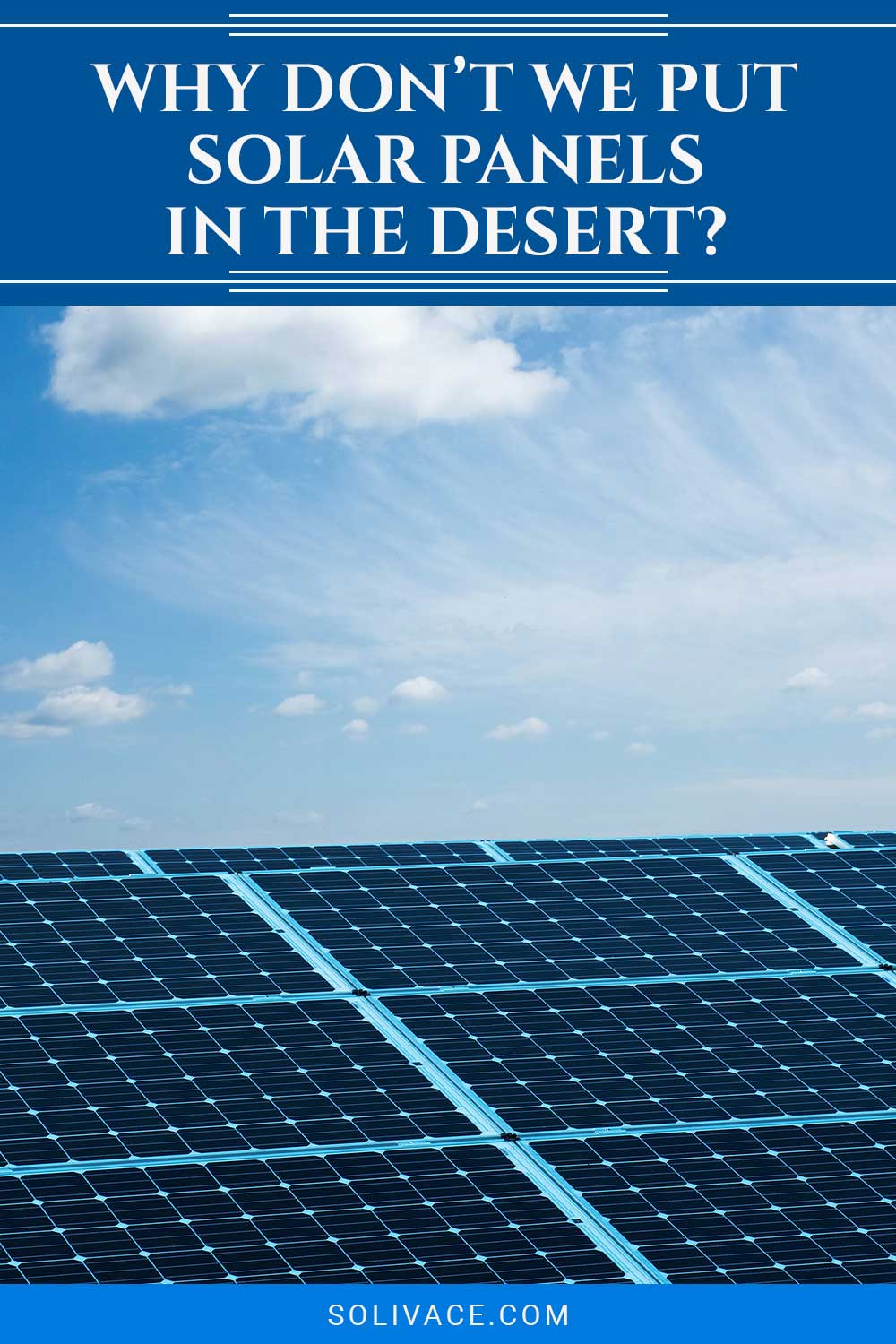Why Don’t We Put Solar Panels In The Desert?
We may earn commissions for purchases made through links on our site. Learn more on our about us page.
When discussing topics about solar energy and potential solutions, many people come up with the idea of covering some of the world’s largest deserts with solar panels to generate electricity. So using this empty space would be a good thing, right?
Unfortunately, it’s not as easy as just placing a bunch of solar panels and calling it a day. The cost of a large project would be astronomical, with huge environmental and logistical hurdles or problems.
Keep reading to learn more about why we don’t put a bunch of solar panels in the desert, what would happen if we did, and more.

What Would Happen If We Covered the Desert in Solar Panels?
In reality, some solar panel farms are already in select pockets of deserts like the Sahara desert. These panels aim to take advantage of the 22 million terawatt hours of energy that the area receives each year from the sun.
However, the problem with covering the entirety of the desert with solar panels is not immediately obvious to many people.
Because the solar panels would be sitting on top of the ground, there is potential for habitat disruption or destruction for the few organisms that survive in this extreme location.
What’s worse is that it’s likely that the solar panels would actually increase local temperatures in contrast to what many people think.
Why is This Not Happening?
The cost is probably the biggest reason that much of the desert remains untouched by solar technology.
Even as solar panels become more efficient and the cost comes down, installing solar panels and the rest of the equipment needed to harvest the sun’s power is an enormous cost.
Even if you used an entire country’s, like the US, annual budget to fund a project of this size, some estimates suggest that it would only account for about 5 percent of the total cost. This isn’t necessarily even covering the cost of parts’ transportation and installation labor.
Would it Hurt the Environment?
The answer is a resounding yes, no matter how you think about it. Not only would it disrupt or destroy the immediate environment for the flora and fauna that manage to survive in these areas, but it would also have massive global implications.
The Sahara region used to be a vast lake bed, and the sandy dust of the desert is high in phosphorus as a result. During special events, massive clouds of dust are blown into the atmosphere and travel across the Atlantic Ocean to fertilize the Amazon rainforest.
If the sand can’t be swept up into the sky because solar panels are lying on top of it, then the rainforests lose a vital nutrient that sustains much of its plant life.
What are the Possible Issues?
Aside from damaging the global environment and being insanely expensive, there are also logistical issues you have to consider.
For example, where will we store the energy produced in the desert during the night when energy production drops while half the world still needs power?
A massive battery bank like this adds to the cost and would also take up a huge space that needs to be accounted for. Let’s assume that this is not an issue for a moment. How will we transport the energy to every country around the world?
Lengthy power cables would be needed to distribute power to national grids across the globe, adding yet another cost for which we may not even have the raw materials.
Not only this but a ridiculous amount of power would be lost in transit, even if a dangerously high voltage was used.
For How Long Would the Panels Last?
The delicate and sensitive electronics housed in solar panels by nature must be able to handle higher temperatures because they sit in the sun’s light all day. However, that doesn’t mean they are meant to endure the extreme temperatures of deserts.
Assuming we put the solar panels into the Sahara desert, they could be subject to temperatures of up to 176 degrees Fahrenheit (80 degrees Celsius).
Expensive and complicated cooling systems could be used to ensure the panels last longer and have higher efficiency, but this would use a lot of the energy being produced.
In addition, constant maintenance would have to be performed to keep electronic interiors clear of dust and debris.
Solar panels would also be buffeted by winds with sand particles, physically wearing away at the panels. Solar panels on a typical suburban rooftop can easily last 25 years, but their lifespan would be drastically reduced in a desert.
Final Thoughts on Why Don’T We Put Solar Panels In The Desert
In theory, putting solar panels into our deserts to produce large amounts of energy for the whole world to enjoy is smart. However, plenty of obstacles crop up when you begin to consider the details and logistics of such an undertaking.
Once you take these things into account, it is no longer smart or economical to be putting huge solar farms in the desert. If the goal is to be environmentally friendly, the opposite would be achieved through this idea of “green” energy.



Leave a Reply
You must be logged in to post a comment.